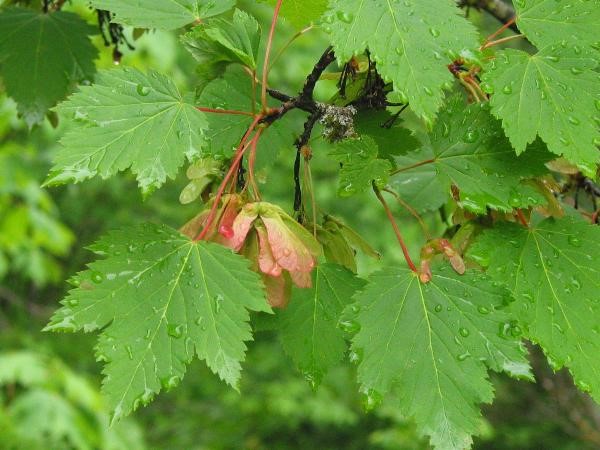Secwepemc name: t’swállten
The inner bark of this maple is tough and stringy. Divided into very thin strips, it was used as a thread for stringing roots to be dried, such as the bulbs of avalanche lily (scwicw). Mary Thomas described this use:

You could make rope – you could braid fine strands of the maple; that was not as strong as the hemp, but you could still use it. And then also for root edibles, the yellow lily or avalanche lily [Erythronium grandiflorum] roots . . . my grandma used to lay them out and they’d start to wilt and they get soft. And then we’d strip the maple bark in little threads and string those roots into big necklaces and hang them to dry, and those were pit-cooked….
Mary Thomas also described how strips of the inner bark are woven in a checkboard fashion into a rectangular tray, used to encase food being pit-cooked; the edges were twined with the inner bark of “green willow.” The hard wood of maple was used by some people to make a two-pronged fishing spear for salmon. The wood was also used for snowshoes. Maple wood was also sometimes used for fish traps and scoop net handles, and was considered an excellent fuel. Mary Thomas said that a mixture of maple inner bark and leaves was made into a tea, using one teaspoon to a cup of hot water. A cup of this tea was drunk every hour as a treatment for liver and spleen problems; it was also drunk to quiet the nerves. [occurrence in area: BCMELP 1997; pers. obs.]
Ecological requirements
Mesic to dry forests and rocky slopes in the lowland and montane zones; common throughout BC
![]()
